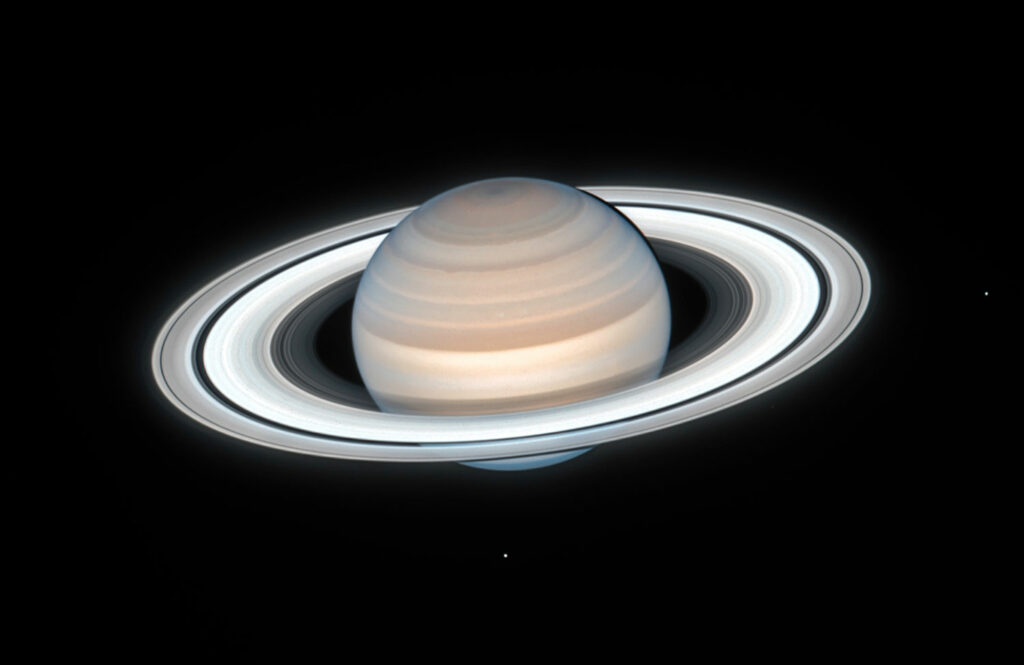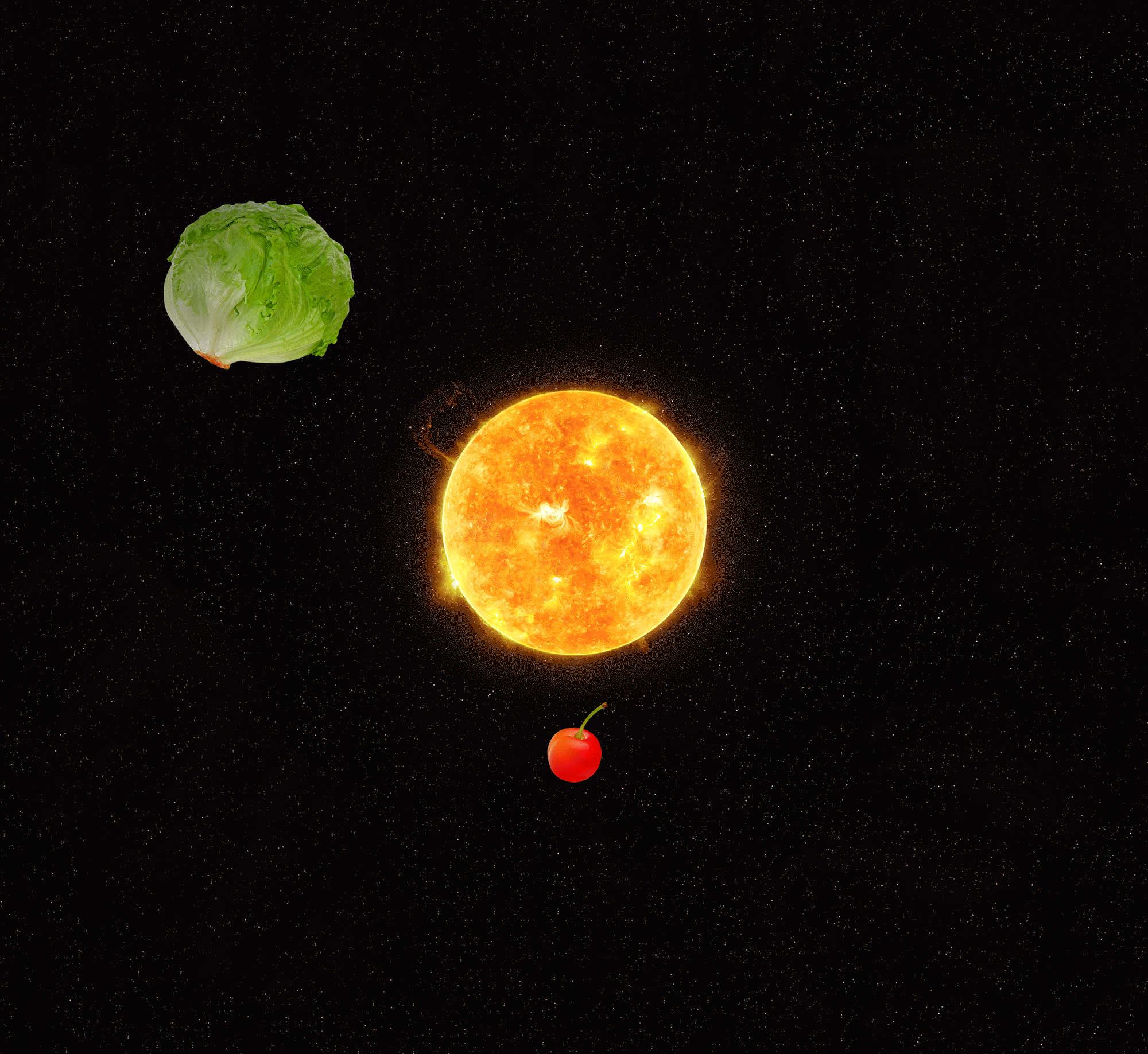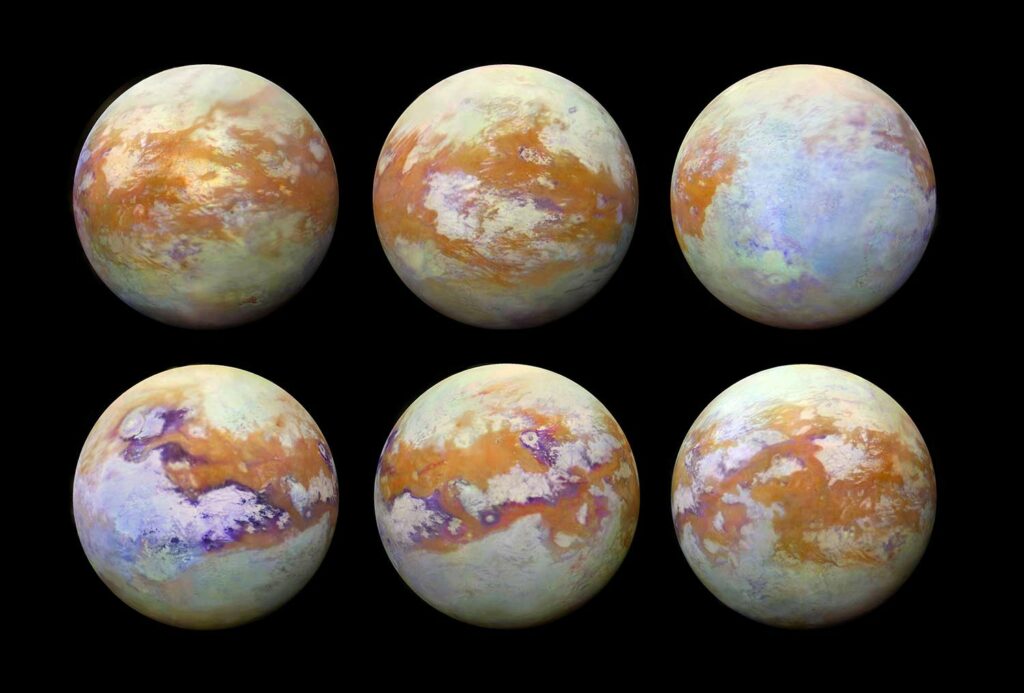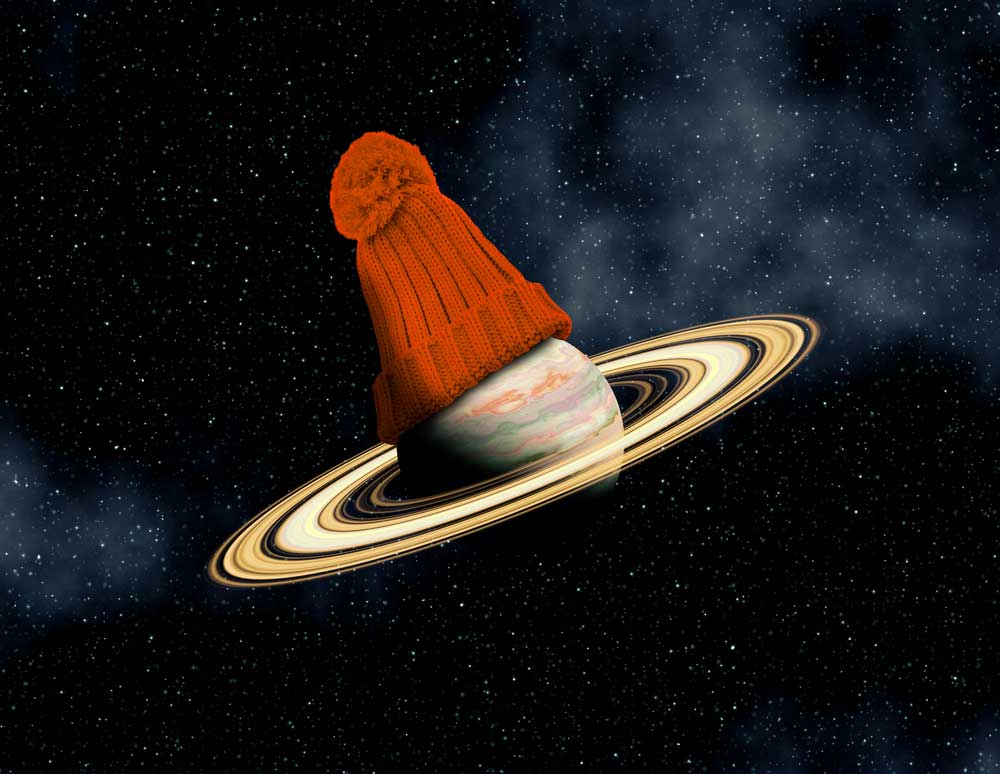How Saturn Got Its Rings
Scientists believe they know the origin of Saturn’s famous rings.

Image – NASA, ESA, A. Simon (Goddard Space Flight Center), M.H. Wong (University of California, Berkeley), and the OPAL Team
The Hubble Space Telescope took this image of Saturn in 2020.
The universe is full of mysteries. Is there life on other planets? Is there more than one universe? And why does Saturn have those rings? Scientists have found a possible answer to that last question. The rings may be what’s left of a satellite that was destroyed by Saturn’s gravity.
Saturn is more than 4.5 billion years old, and for most of that time, it probably didn’t have rings. In a recent study, scientists theorized that about 160 million years ago, one of Saturn’s moons got too close to the giant planet and was ripped apart by Saturn’s gravitational pull. Most pieces of the shattered moon got sucked into Saturn’s atmosphere. But about 1 percent of them remained in orbit, eventually forming the beautiful rings that still surround the planet.
Scientists named this theoretical moon Chrysalis.
“As a butterfly emerges from a chrysalis, the rings of Saturn emerged from the primordial satellite Chrysalis,” Jack Wisdom, a professor of planetary science at the Massachusetts Institute of Technology (MIT) and lead author of the study, told Reuters.
Saturn isn’t the only planet in our solar system that has rings. Rings surround Jupiter, Uranus, and Neptune, though they’re not as large and bright as Saturn’s. Saturn’s rings are made up mostly of particles of water ice, which suggests that Chrysalis would have been composed mainly of water ice.
Saturn is slowly losing its rings. The particles, which range from the size of a grain of sand to the size of a mountain, are being sucked in by Saturn’s gravity. But they won’t all go away in our lifetime. Scientists estimate that Saturn will be a ringless planet about 300 million years from now.



